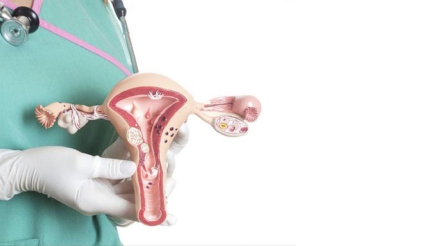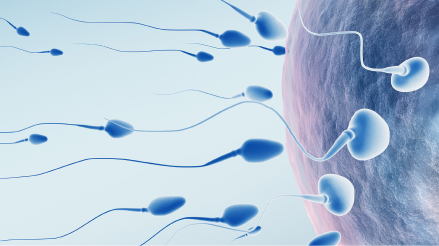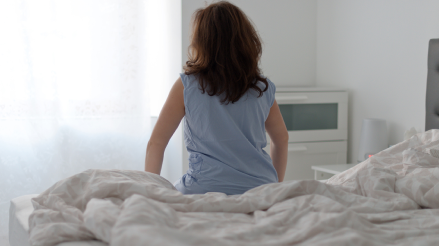You may also like…
Getting Pregnant : When to have Sex
Properly timed intercourse: use an Ovulation Tracker
So, when should you, as a couple have sex to increase your chances of getting pregnant?
Listen up, lovebirds! Timing is everything when it comes to unlocking the secrets of baby-making. It's like a thrilling race against the clock, where every second counts.
But fear not, for we have a handy tool to assist you on this journey—a magical ovulation tracker. Click here to download our exclusive "Ovulation Tracker" (coming soon!) and embark on a journey of discovery! This little companion will help you track your ovulation cycle and pinpoint your fertile window. Remember, baby-making superheroes, the key is to have intercourse within the three to five-day duration of this window, giving you the best chance of conceiving that little bundle of joy.
Let's delve into the exciting details of your fertile period. You see, that precious egg released during ovulation is a bit of a diva—it remains viable for no more than 24 hours. So, we need those speedy little sperm warriors to be ready for action right after ovulation.
Now, the period of female fertility during each month is quite short—about four to five days. But don't fret, dear adventurers, because we've got some amazing tips to maximize your chances of success! Couples who engage in baby-making activities three times a week are three times more likely to conceive than those who do it just once a week. Woohoo! But hold on to your hats, because the real magic lies in "intercourse at least every alternate day."
Let's talk about the incredible dance between eggs and sperm. Eggs are thought to be at their most fertilizable point for about 12 to 24 hours after ovulation, while those brave little spermies can survive in the female reproductive tract for up to 72 hours. Talk about stamina! So, it's all about finding that perfect window of opportunity for these two magical ingredients to meet and create a little miracle.
Now, here's where it gets even more fascinating. Ovulation usually occurs about 14 days before menstruation/period, and the luteal phase (that stable period afterward) remains relatively consistent. This means that the "fertile window" varies depending on the average length of your menstrual cycle. For example, if you have a 28-day cycle, your optimal fertile window will be between days 12 and 15. But remember, dear adventurers, these are just guidelines, and every woman's cycle is unique. So, embrace your individuality and discover your own fertile window!
Other indicators of being in your fertile period include a raised temperature and a sticky white cervical fluid consistency.
Basal Body Temperature: The Harsh Truth
As you approach ovulation, your basal body temperature takes a little dip, about 1/2 degree Fahrenheit. It's like a cool, refreshing splash signaling that your body is gearing up for the big moment. But hold on tight, because after ovulation, your temperature starts to rise. It's like a gentle wave of warmth, about 1/2 to 1 degree Fahrenheit higher than your preovulatory level. This rise is all thanks to the thermogenic powers of progesterone, the hormone superstar responsible for the magic of the corpus luteum and ovulation.
Now, here's the exciting part. By tracking these temperature changes accurately, you can unlock the mysteries of your ovarian cycle. It's like having a secret decoder to determine whether ovulation has occurred and precisely when it took place. But remember, dear temperature trackers, precision is key. Make sure you can read your thermometer to 1/10th degree, because every little detail counts on this temperature adventure!
Oral temperatures are the way to go, as long as you avoid hot or cold drinks before checking. And the best time to measure your basal body temperature is right after waking up in the morning. So, set your alarm, grab that thermometer, and let the temperature tracking begin!
Don't forget to keep a record of your temperatures on a graph. It's like creating a personal temperature masterpiece, allowing you to visualize the ups and downs of your cycle. Just imagine the satisfaction of seeing your temperature patterns unfold!
But here's a little secret: basal body temperature is retrospective. It's like a time traveler, giving you a glimpse into the past but not revealing what lies ahead. So, it may not be the best tool for predicting impending ovulation or assisting with IVF. However, it's important to note that basal body temperature can't reveal any issues with corpus luteal phase or faulty folliculogenesis. It's like a temperature wizard with its limitations.
Now, let's address the elephant in the room—basal body temperature has become a bit outdated. It's like a relic of the past, and we have some reasons why. First, the daily recording can be a bit tedious. Second, it's not the most accurate method out there. We deserve accuracy in our temperature adventures! Third, it's retrospective, which means it's more of a diagnostic tool than a therapeutic one. And finally, we have some fantastic ultrasound technologies available for better follicular monitoring. It's like upgrading from a flip phone to a high-tech smartphone!
Use your trusty ovulation tracker, keep the passion alive, and dance to the rhythm of your bodies. And most importantly, don't forget to have fun along the way!







